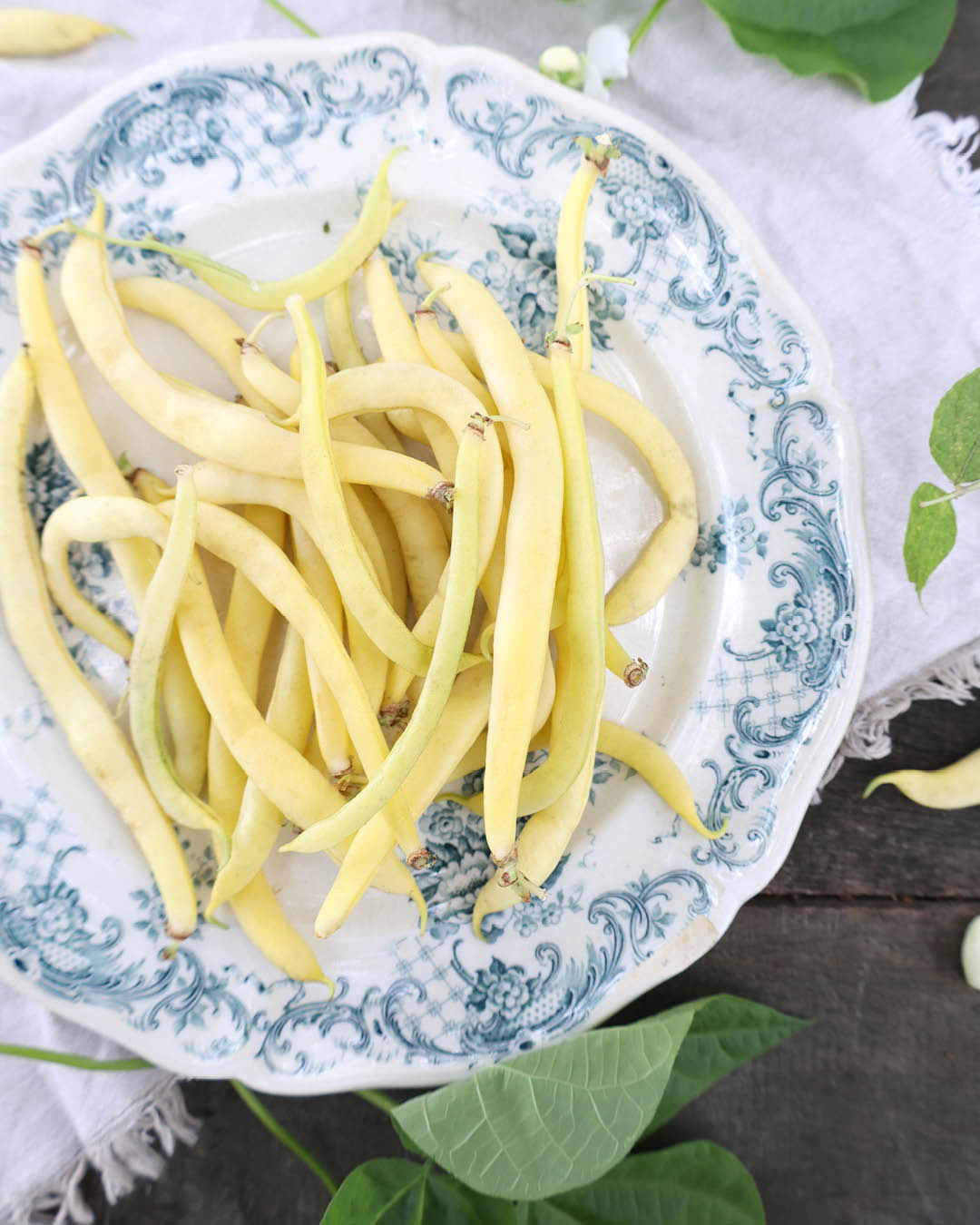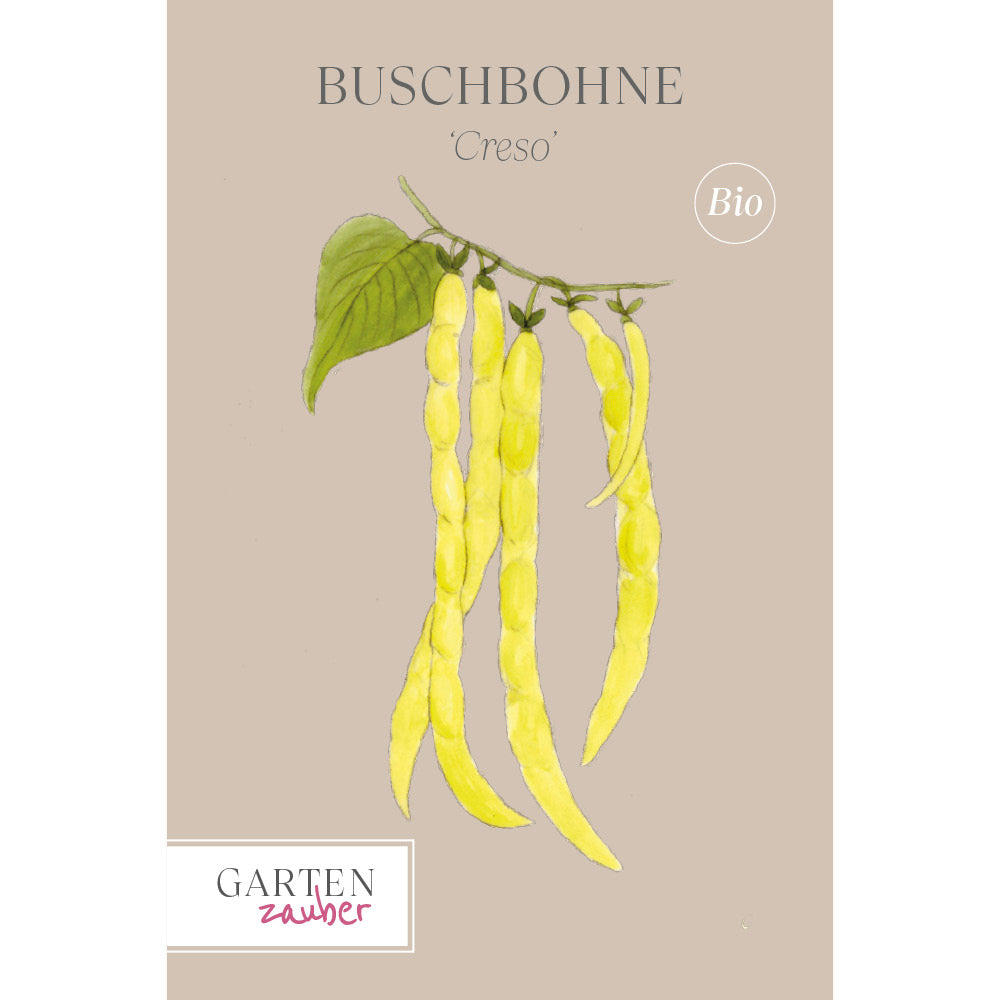The Creco bush bean is a vigorous, robust, light-yellow bush bean (wax bean). Its long, stringless, slightly curved pods have a good flavor. The harvest is very bountiful and early. Cooked with savory, the beans are particularly aromatic.
Our high-quality organic vegetable seeds are grown according to the strictest organic standards for a sustainable and healthy harvest.
Details:
Sowing indoors/greenhouse: From April
Sowing outdoors: May - June
Germination time: 20-30 days at 8-12°C
Sowing depth: 2-3 cm, dark germinator
Height: 30-40 cm
Planting distance: 40-60 x 8-10 cm
Harvest time: July to September
Soil: Deep, humus-rich soils
Fertilization: Organic fertilizer or compost
Location: Sunny
Water consumption: High
Growing tips:
Bush beans don't have particularly demanding soil requirements. It should be deep, loose, and well-drained. Ideally, a sunny to partially shaded location is best. Raised beds are also ideal, as bush beans don't require any trellis support and tend to grow bushily. Care should be taken to ensure adequate planting distances.
Because beans are very sensitive to cold, sowing outdoors should only take place after the last night frosts, starting in mid-May. To encourage an earlier harvest and prevent bean fly infestation, the beans can be started in the greenhouse as early as April.
Between flowering and fruit set, bush beans should be kept well and evenly moist, and the soil should be regularly loosened. This allows for improved water absorption and prevents weed growth, as well as the establishment of pupae and root pests. Regular harvesting promotes the formation of new fruit pods.
After harvesting, the plant should be cut above the roots and its roots should be left in the soil, as they enrich the soil with nitrogen as they decompose.
Mixed culture:
Good neighbors: savory, potatoes, dill
Bad neighbors: onions, leeks, peas, fennel, garlic
Use:
The beans taste best when freshly harvested, although they should always be eaten cooked. After cooking, they retain their beautiful color if briefly blanched in ice water. They can be enjoyed warm or dressed cold in a salad.
Bag contents:
approx. 20 grams
Store in a cool, dry place.





